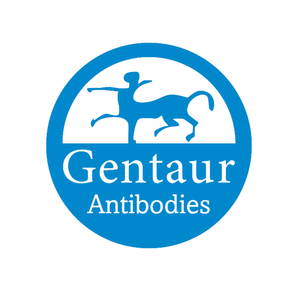TGF Beta Receptor II Antibody | 247-OAAF07227-HRP
Antibodies that detect TGF beta-2 can be used in several scientific applications, including Western Blot, immunohistochemistry (paraffin), ELISA, immunocytochemistry, and immunohistochemistry (frozen).
These antibodies target TGF beta-2 in human, mouse and rat samples. Our polyclonal, recombinant polyclonal and monoclonal TGF beta-2 antibodies are developed in rabbits and mice. These antibodies were checked by Knockdown to confirm specificity to TGF beta-2. Find the TGF beta-2 antibody that fits your needs. Choose from 1 of 15 TGF beta-2 antibodies, which have been validated in experiments with 10 publications and 36 images featured in our data gallery.
Browse primary antibodies for WB, Flow, IHC, ICC/IF, ELISA, IP and other applications. Antibodies with advanced verification data have been validated for specificity to ensure that the antibody binds to the indicated antigen. If you can't find the antibody you're looking for, contact us today to develop custom antibodies for specific targets, species and applications.
Target information
Transforming growth factor (TGF) betas are involved in many cell-to-cell interactions that occur during embryonic development. Three beta TGFs have been identified in mammals. TGF beta 1, TGF beta 2, and TGF beta 3 are each synthesized as very similar precursor proteins in that each is cleaved to yield a 112 amino acid polypeptide which remains associated with the latent part of the molecule.
TGF beta polypeptides are multifunctional; capable of influencing cell proliferation, differentiation and other functions in a wide range of cell types. Transformed tissues, as well as non-neoplastic tissues, release transforming growth factors; and virtually all mammalian cells possess a specific TGF receptor. The multimodal nature of TGF beta is seen in its ability to stimulate or inhibit cell proliferation.
In general, cells of mesenchymal origin appear to be stimulated by TGF beta while cells of epithelial or neuroectodermal origin are inhibited by the peptide. TGF beta 1, TGF beta 2, and TGF beta 1.2 appear to have equivalent biological activity, although there appear to be differences in binding to certain types of receptors.
TGF beta 2 is produced by many cell types and has been found at the highest concentration in porcine platelets and mammalian bone. Latent TGF beta 2 is the predominant isoform found in bodily fluids such as amniotic fluid, breast milk, and the aqueous and vitreous humor of the eye.








